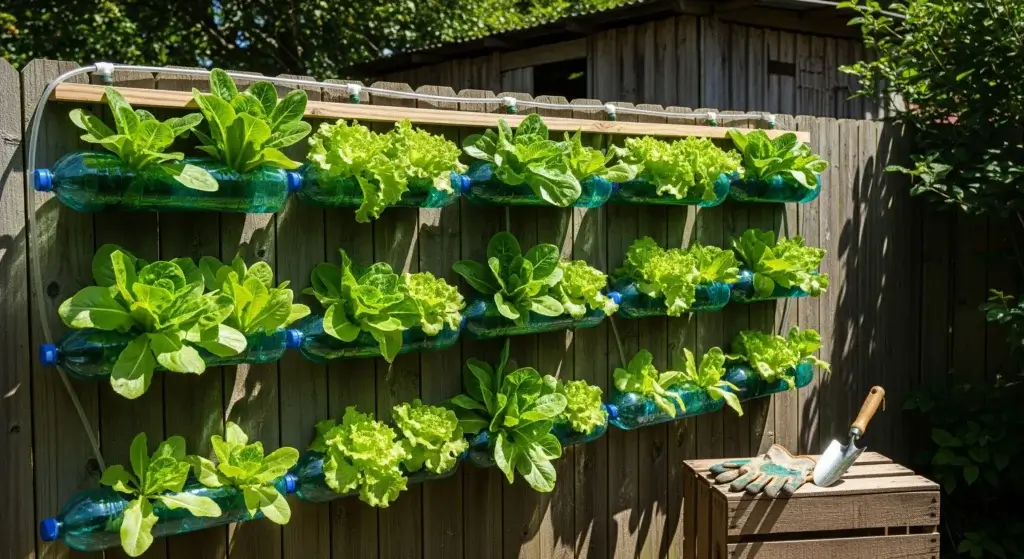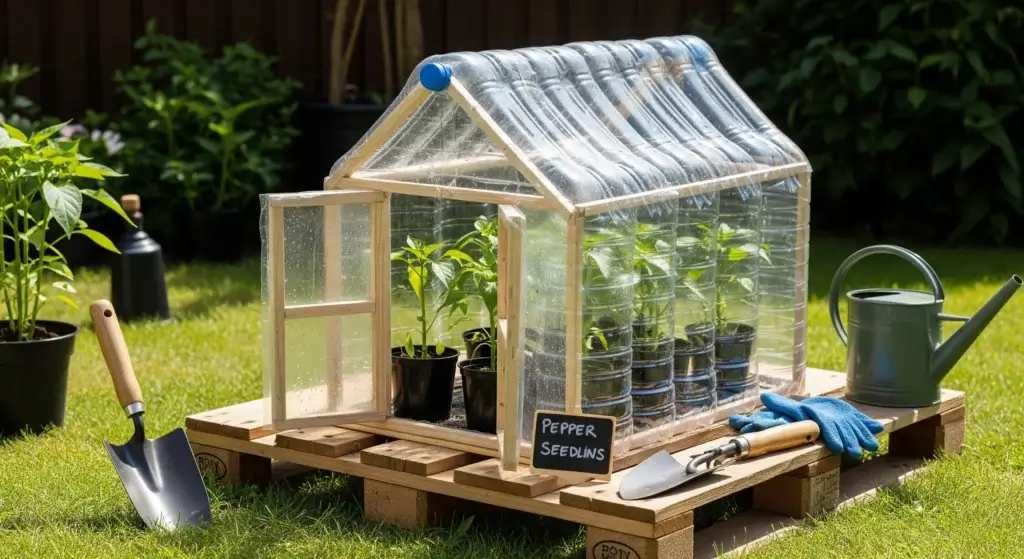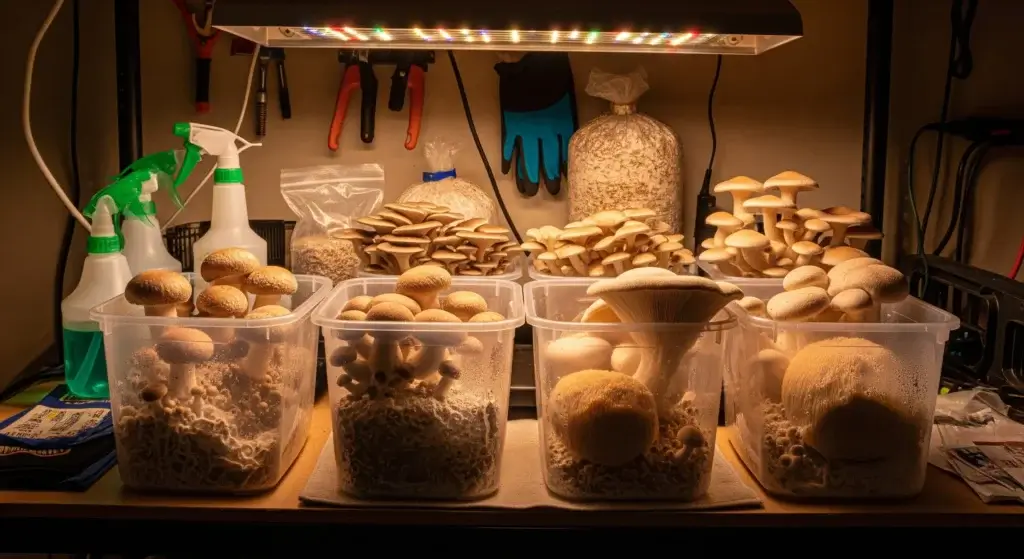
Are you looking for a creative and space-saving way to grow your favorite herbs on your balcony?
Look no further than a DIY vertical herb garden.
Not only will you be able to enjoy fresh herbs right outside your door, but you’ll also be adding a touch of greenery to your outdoor space.
In this article, we’ll explore the different options for building a vertical herb garden, discuss the factors to consider when choosing a project, and provide a step-by-step guide on how to build and maintain your very own vertical herb garden.
Choosing Your DIY Project
When it comes to building a vertical herb garden, you have several options to choose from. Here are a few ideas to get you started:
Hanging planters on a lattice
If you’re working with limited space like a small balcony, hanging planters on a lattice can be an excellent choice.
You can easily find hanging planters made from various materials like wood, plastic, or metal, depending on your aesthetic preferences.
By attaching these planters to a lattice structure, you not only maximize vertical space but also create a visually appealing herb garden.
The lattice adds a decorative touch while providing sturdy support for your planters.
- Read also: From Trash to Table: DIY Container Ideas For Herbs
- Read also: Herb Heaven Indoors: DIY Indoor Herb Garden With Grow Lights
Pocket planters on a felt sheet
For those seeking a compact and versatile solution, pocket planters on a felt sheet offer a creative alternative.
These pocket planters, typically made from fabric or plastic, allow you to grow multiple herbs in a small space.
By attaching them to a felt sheet, you can create a modular herb garden that can be easily customized and rearranged as needed.
This setup is ideal for vertical gardening in tight spaces like narrow balconies or urban apartments where floor space is limited.
Repurposed rain gutters
If you’re drawn to a more rustic or industrial aesthetic, repurposed rain gutters can make for a unique and functional vertical herb garden.
By salvaging old rain gutters and attaching them to a wall or fence, you can create a series of elongated planters for your herbs.
This DIY approach not only adds character to your outdoor space but also maximizes growing area for your herbs.
The length of the gutters allows for multiple herbs to be planted side by side, creating a lush and abundant garden.
Ensure proper drainage by drilling holes in the bottom of each gutter and consider adding end caps to prevent soil from spilling out.
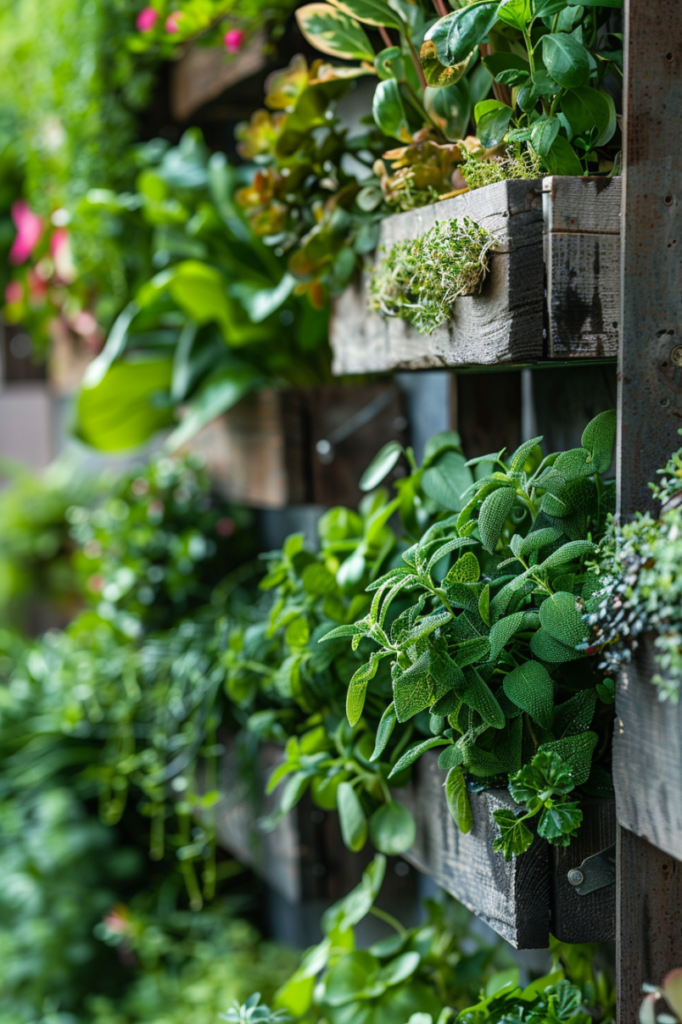
Factor to Considers
When embarking on a DIY project, it’s essential to carefully assess several factors to ensure its success and suitability for your needs.
Here’s a closer look at each consideration:
Sun exposure
Sunlight is vital for the growth and health of your herbs. Before choosing a project, evaluate the available sunlight in the intended location.
Most herbs thrive with 4-6 hours of direct sunlight daily.
If your chosen spot receives less sunlight, consider selecting herbs that tolerate partial shade or exploring alternative growing methods such as grow lights for indoor spaces.
Desired Number of Herbs
Determine how many herbs you’d like to grow to inform your project choice.
Different projects offer varying capacities for herb growth, ranging from a few plants to a more extensive herb garden.
If you have limited space or are focusing on specific herbs, opt for smaller-scale projects like hanging planters or pocket planters.
For larger herb collections or a diverse selection, consider projects with greater planting capacity such as repurposed rain gutters or vertical garden walls.
Budget
Assess your budgetary constraints before starting your DIY project.
Consider the cost of materials, tools, and any additional accessories required.
Opt for cost-effective materials that align with your budget while ensuring durability and functionality.
Repurposing items or sourcing materials from thrift stores and salvage yards can be budget-friendly alternatives.
DIY Skill Level
Be honest about your DIY skill level and choose a project that matches your proficiency.
Beginner-friendly projects typically involve simple construction techniques and readily available materials, making them accessible to those with limited experience.
Examples include basic hanging planters or pocket planters assembled with minimal tools and expertise.
Intermediate and advanced projects may involve more complex assembly, carpentry skills, or specialized equipment.

Materials and Tools
Before diving into your chosen DIY project, it’s essential to gather all the necessary materials and tools.
Here’s a detailed breakdown of what you’ll need for each project:
Hanging planters on a lattice
- Hanging planters: Choose planters made of wood, plastic, or metal, depending on your preference and the aesthetic you want to achieve.
- Lattice structure: Opt for a lattice made of wood or metal to provide support for your hanging planters.
- Screws or nails: Use screws or nails to secure the planters to the lattice structure.
- Drill or saw: A drill or saw will be necessary for attaching the planters to the lattice and making any necessary adjustments to fit your space.
Pocket planters on a felt sheet
- Pocket planters: Select fabric or plastic pocket planters designed for vertical gardening.
- Felt sheet: Choose a durable felt sheet as the base for your pocket planters.
- Scissors: Use scissors to cut the felt sheet to the desired size and shape for your vertical herb garden.
- Hot glue gun: A hot glue gun is handy for securing the pocket planters to the felt sheet.
Repurposed rain gutters
- Repurposed rain gutters: Salvage old rain gutters or purchase them from a hardware store for repurposing into planters.
- Wall or fence to attach to: Identify a suitable vertical surface such as a wall or fence where you can install the repurposed rain gutters.
- Screws or nails: Use screws or nails to attach the rain gutters securely to the wall or fence.
- Drill or saw: A drill or saw will be necessary for mounting the rain gutters to the wall or fence.
Building Your Vertical Paradise
Building your own vertical herb garden is an exciting project that can add both functionality and beauty to your space.
Here’s a detailed step-by-step guide to help you bring your vision to life:
Prepare the materials
Before diving into construction, take some time to gather and prepare all the necessary materials and tools.
This includes cutting the lattice structure to the desired size if you’re opting for hanging planters on a lattice, or preparing the felt sheet and pocket planters for attachment.
Ensure you have screws or nails on hand to securely fasten the planters to the chosen structure.
Attach the planters
Once your materials are ready, it’s time to attach the planters to the designated surface.
If you’re building a hanging planter setup, carefully mount the planters onto the lattice structure using screws or nails.
Ensure that the planters are evenly spaced and securely attached to prevent them from shifting or falling.
For the pocket planter option, use a hot glue gun to affix the pocket planters to the felt sheet, ensuring they are evenly distributed and securely adhered.
Add the herbs
With the planters securely in place, it’s time to add your chosen herbs.
Carefully transplant or sow the herbs into the prepared planters, ensuring there is enough space between each plant for optimal growth.
Consider the sunlight requirements and growth habits of each herb when deciding placement within the vertical garden.
Ensure that the soil is well-draining and provide adequate watering to help the herbs establish themselves.
Add the finishing touches
Once your herbs are nestled into their new homes, take a moment to add any finishing touches to your vertical herb garden.
Consider incorporating decorative elements such as trim, paint, or a trellis to enhance the visual appeal of your creation.
Additionally, you may want to add labels or markers to identify each herb and create a more organized and visually appealing display.
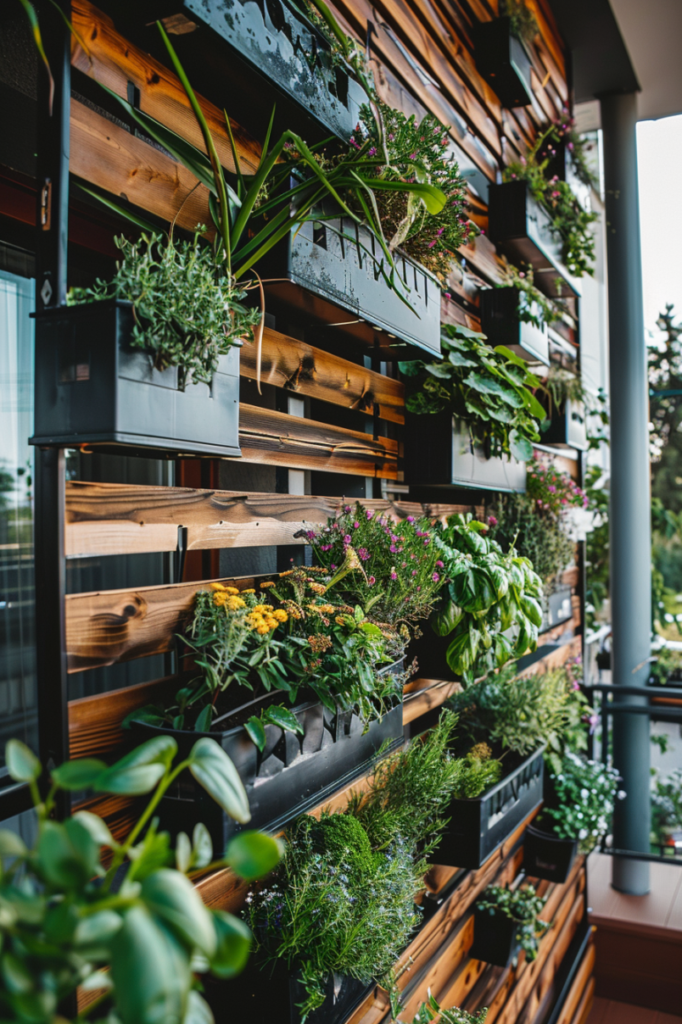
Planting and Maintaining Your Herbs
Planting and maintaining your herb garden is a rewarding endeavor that requires attention to detail and care. Here are some essential tips to help you get started and ensure the health and vitality of your herbs:
Select the right herbs
The first step in planting your herb garden is choosing herbs that are well-suited to your balcony’s sunlight conditions.
If your balcony receives ample sunlight, opt for sun-loving herbs like basil, oregano, and thyme.
These herbs thrive in full sun and will produce abundant foliage and flavor when provided with adequate sunlight.
On the other hand, if your balcony receives partial shade, consider planting herbs like mint, parsley, and cilantro, which tolerate lower light levels and will flourish in shadier conditions.
Prepare the planters
Before planting your herbs, it’s essential to prepare the planters to provide optimal growing conditions.
Ensure that each planter has adequate drainage holes to prevent waterlogging, which can lead to root rot and other problems.
Additionally, choose a high-quality potting mix specifically formulated for herbs, as this will provide the necessary nutrients and drainage for healthy growth.
Water and fertilize
Proper watering is essential for the health and vitality of your herbs.
Check the moisture level of the soil regularly and water your herbs as needed to keep the soil consistently moist but not waterlogged.
Herbs generally prefer slightly drier conditions, so allow the top inch of soil to dry out between waterings.
Avoid overwatering, as this can lead to root rot and other issues.
Additionally, fertilize your herbs once a month with a balanced fertilizer to provide essential nutrients for growth and development.
Choose a fertilizer specifically formulated for herbs and follow the manufacturer’s instructions for application rates and frequency.
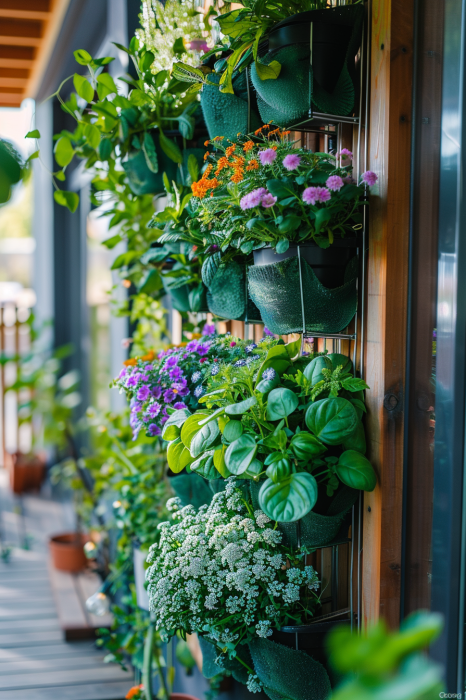
- Read also: Step by Step Guide to DIY Microgreens Indoors
- Read also: DIY Vegetable Garden For Small Spaces
Conclusion
Building a DIY vertical herb garden is a fun and rewarding project that can add a touch of greenery to your balcony.
By following these steps and choosing the right materials and tools, you can create a beautiful and functional vertical herb garden that will provide you with fresh herbs all season long.

